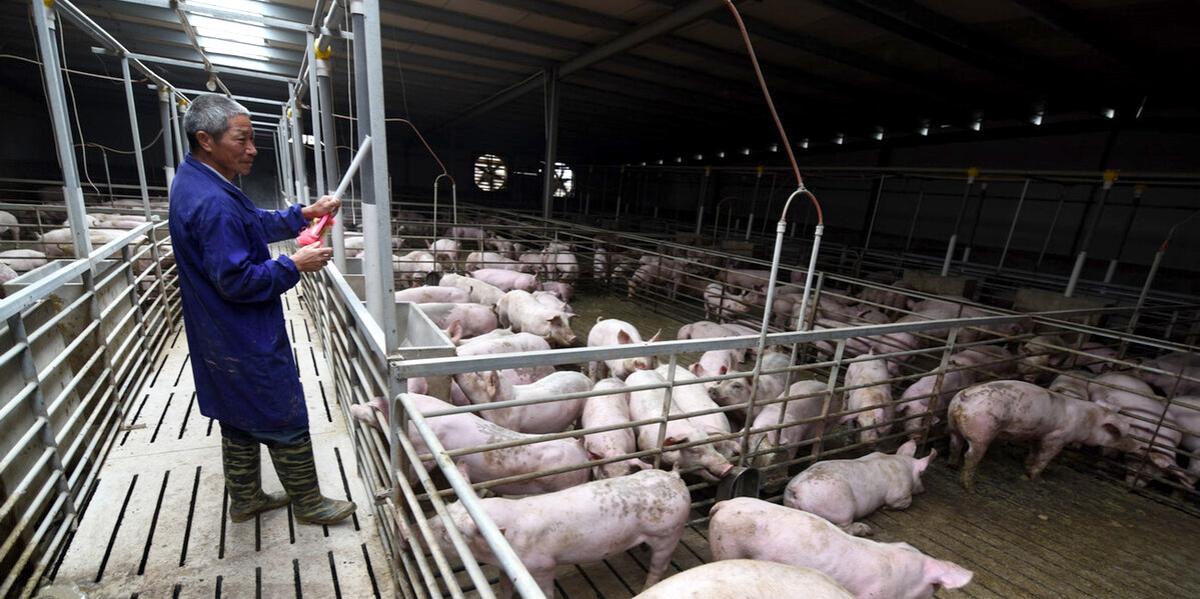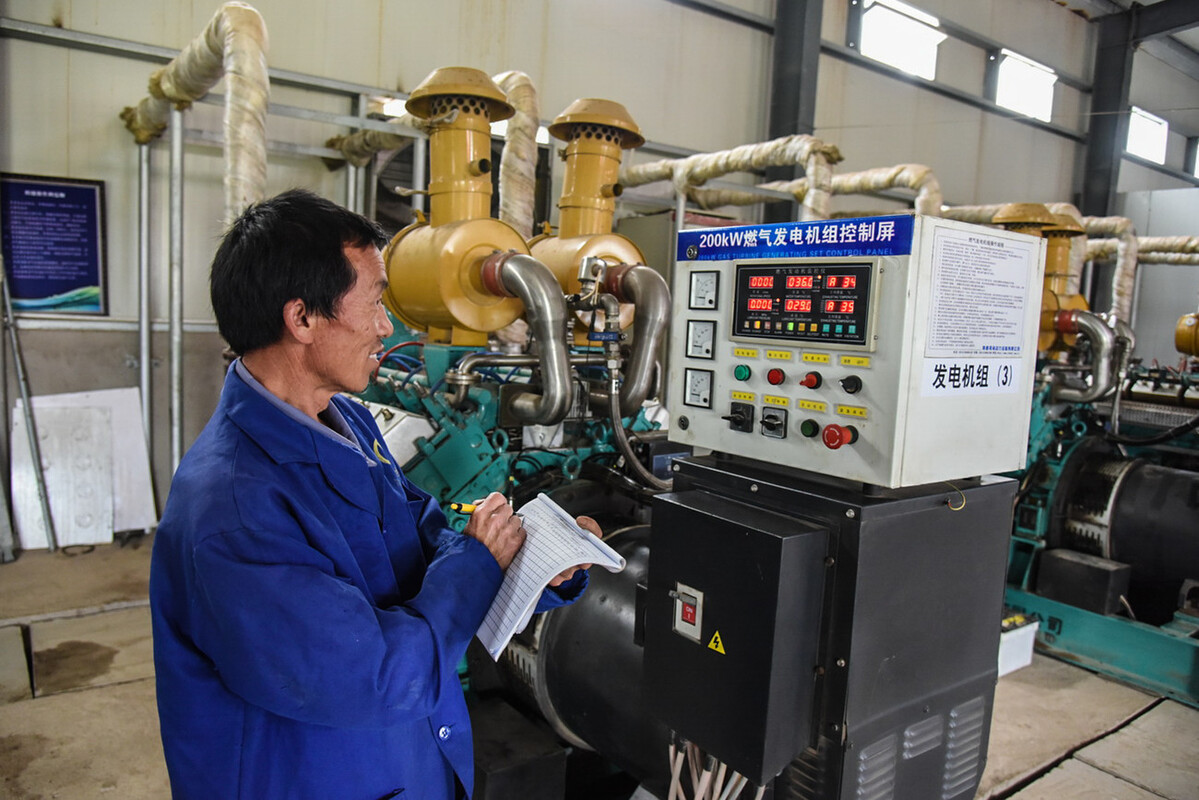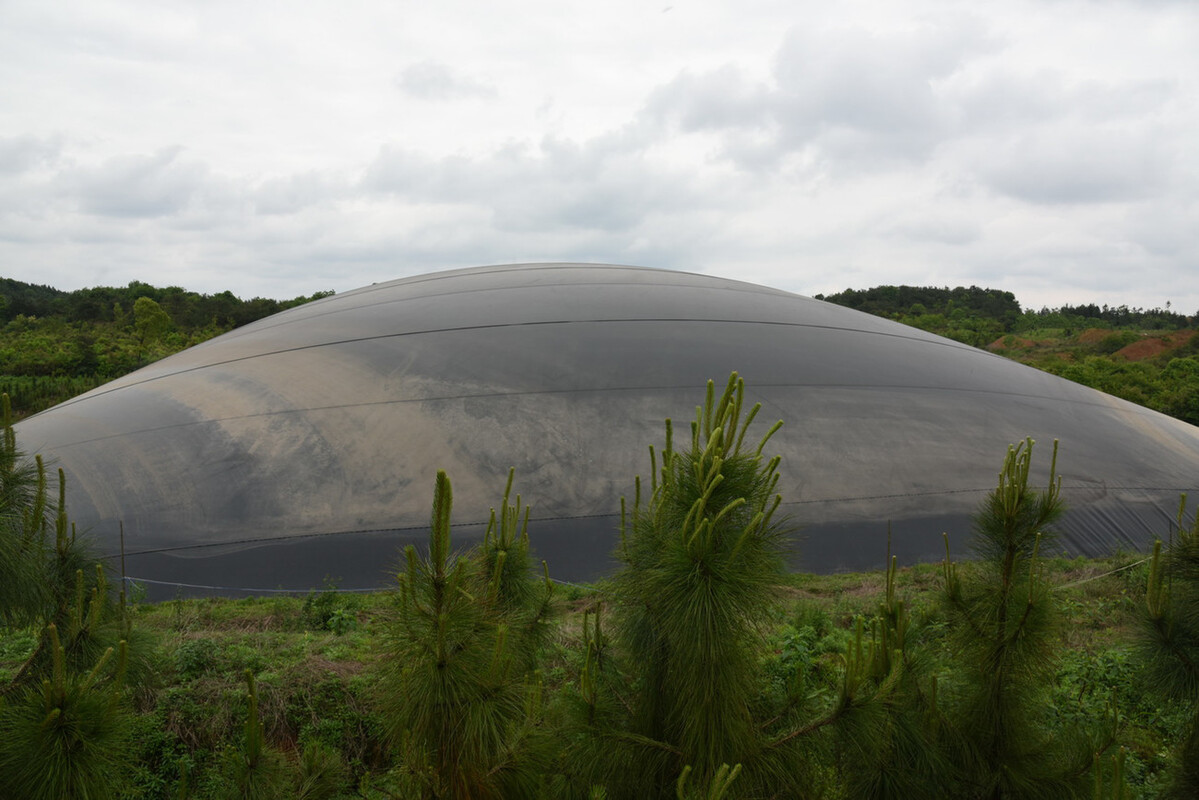East Asia Blog Series
Unlocking the Benefits of Biogas in a Circular Agri-food Economy
Lanlan Lu 17 Mar 2023
In the People’s Republic of China, biogas plants supply electricity to livestock farms using their wastes and produce organic fertilizer for eco-farming.
Overview
An innovative biogas project in the People’s Republic of China (PRC) helped create an environmentally and socially sustainable circular economy for the rural livestock industry. Using an integrated approach, it reduced pollution and contributed to climate mitigation and adaptation while improving the livelihood of farmers and public health in four provinces.
The project produced biogas by using animal waste from livestock farms and supplied electricity to these farms and the grid. Sludge and slurry from the biogas plants were turned into fertilizers for ecological farming (eco-farming).
The most successful case under the project was the implementation of a closed-loop circular economy by a privately owned farm in Jiangxi province. It used its own biogas-generated electricity and sold it to the power grid with feed-in-tariff.
Other countries in the region can learn from the lessons and best practices from this Asian Development Bank-supported project, which can be replicated in all provinces across the PRC.
This case study is adapted from Practical Responses to Real Problems: Eight Poverty Reduction Cases from the Asian Development Bank (Volume 2) and project documents.
Project information
Project snapshot
- Approval date:16 April 2010
- Closing date: 1 September 2020
- Total project cost: $88.7 million
- Executing agency: Department of Agriculture, Heilongjiang Province; Department of Agriculture, Henan Province; Department of Agriculture, Foreign Office of Jiangxi Province; Department of Agriculture, Shandong Province.
- Financing: Asian Development Bank; Global Environment Facility.
Challenge
In the PRC, rising rural energy consumption and environmental degradation have been a cause for concern. From 2000 to 2016, rural areas saw an increase in annual energy consumption per person of 9.81%. Reliance on burning coal, firewood, and straw resulted in serious rural-to-urban transboundary pollution and impeded efforts to mitigate climate change impacts.
Meanwhile, livestock farming and agro-industries were developing rapidly. Small household farms grew into medium-sized and large commercialized farms that supply food to the country’s big cities.
The volume of livestock waste is fast increasing. It was estimated that waste from livestock farms will reach 6.76 billion tons by 2020. However, less than half of commercial farms have waste treatment facilities.
Context
Reducing livestock pollution and promoting an “energy–ecological type” of rural livelihood improvement were among the priorities of the PRC government’s Eleventh Five-Year Plan (2006–2010). In the poor rural areas of Heilongjiang, Henan, Jiangxi, and Shandong provinces, the densities of livestock are almost triple the national average, and the pollution problems from livestock farms and agro-enterprises are severe.
An integrated resource-recycling approach can help improve rural environmental management in these areas and advance the ecological civilization agenda in the PRC.
Because of the high concentration of organic materials in the waste, anaerobic digestion is an effective technology to manage the livestock waste, while generating substantial biogas renewable energy to meet increasing demand.
Solutions
The Integrated Biogas Renewable Energy Sector Development Project was started in 2010 to improve rural livelihood through innovative methods by converting livestock waste into biogas renewable energy and developing eco-farming services and products to demonstrate the sustainability of a circular economy model.
More than 40% of the subprojects were in both national and provincial poverty counties in Heilongjiang, Henan, Jiangxi, and Shandong.
The project adopted an integrated approach.
- It helped livestock farmers to reduce nonpoint sources of pollution.
- It built links with eco-farming for animal waste residual utilization.
- It generated biogas using livestock waste for electricity.
The project built 65 medium and large-sized biogas plants and six centralized biogas plants, which supplied 80% of the energy requirements of livestock farms and agro-enterprises. It introduced high-temperature flare technology to capture methane gas and minimize emissions from the biogas plants.

Farmers were given guidelines on how to set up, operate, and maintain biogas plants. A performance monitoring system for medium and large-sized biogas plants and a business model for centralized plants were developed. Four provincial technical service centers were established to support the plants, and about 320 technicians were trained.
Sludge, a biogas byproduct, was used to produce fertilizers for eco-farming and reduce the use of harmful chemicals in agriculture.
Results
The project is estimated to reduce 1.72 million tons carbon dioxide (CO2) equivalent of greenhouse gases per year by minimizing methane emissions from livestock farming and replacing fossil fuel or firewood. It treated about 4.87 million tons of livestock and agro-processing waste and produced about 126.41 million metric tons of biogas annually, which was used for cooking, heating, and electricity supply.

About 1.15 million tons of organic fertilizer for eco-farming were produced each year to enhance soil quality, improve agricultural production, and boost carbon sequestration.
More than 36,000 farming households, including the women, earned higher income from biogas-related jobs, and the production and sale of organic fertilizers and products. More than 3,000 residents worked during project construction with almost half of them female. More than 800 of 1,450 workers in the operation and maintenance of the biogas plants are female. Rural households also spent less on chemical fertilizers and increased their income by producing better-quality crops and vegetables.
A private enterprise, Wannianxinxing, demonstrated a successful closed-loop circular economy. Through the use of biogas from pig manure, its annual power generation reached about 2.7 million kilowatt-hours (kWh). The enterprise was able to use this electricity and also sell this to the local grid at CNY0.75/kWh (about $0.11/kWh). To cover the enterprise’s electricity consumption, the owner purchased additional electricity from the local grid at CNY0.65/kWh. This ensured stability of power supply for its manufacturing and production process.
Wannianxinxing also converted biogas sludge for eco-farming and sale of organic products.
Lessons
The use of biogas in rural areas of the PRC can deliver a circular economy model with high value addition to advance ecological well-being and contribute to global efforts in tackling climate change. Agriculture and livestock projects that will use biogas as a source of renewable energy should consider the following lessons:
- A ministry with a strong commitment and binding political and policy targets should lead the project design and implementation.
- Stringent technical parameters should be established for anaerobic digestion capacity, biogas power generation capacity (both electricity and natural gas), and grid connection (if applicable).
- To hedge against external shocks and maintain robust cash flows, the selection of subprojects should focus on enterprises with diversified operations, such as livestock in combination with cold chain, crop or grain processing, or organic fertilizer purification.
- The selection of subprojects should focus on the southern region of the PRC because of its stronger policy coordination and financial capacity and its warmer climatic conditions. Using lessons from successful implementation in the southern region, select one or two central or northern provinces to follow best practices and adopt the project to the local situation.
- The special achievement by the Wannianxinxing subproject in Jiangxi Province, the only successful case of on-grid connection and sale of electricity to the grid as a private enterprise, should be thoroughly analyzed and its lessons disseminated as best practices.
References
Asian Development Bank (ADB). 40682-013: Integrated Biogas Renewable Energy Sector Development Project in the People’s Republic of China.
ADB. 2022. People’s Republic of China: Innovating for Green Farming. In Practical Responses to Real Problems: Eight Poverty Reduction Cases from the Asian Development Bank (Volume 2). Manila.
ADB. 2020. Integrated Renewable Biomass Energy Development Sector Project: Project Completion Report. Manila.
Author

Lanlan Lu
Senior Project Officer, East Asia Department, ADB
This blog is reproduced from Development Asia.


